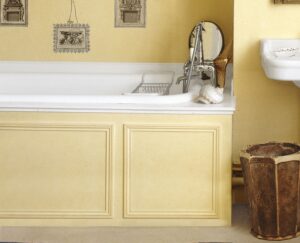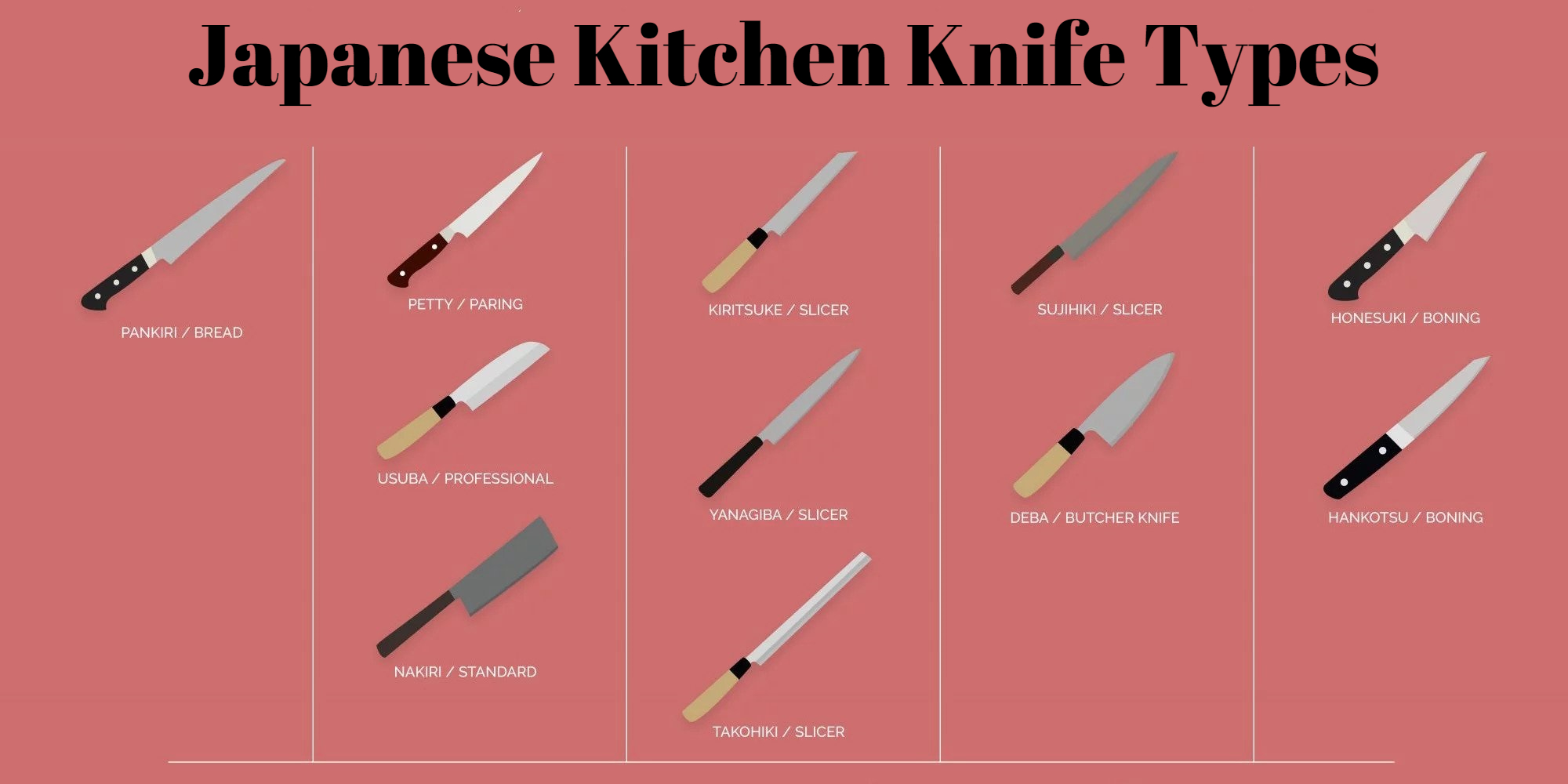
Any chef knows that Their exceptional quality and purpose distinguish Japanese kitchen knives. Today there are more than 800 types of them. A Japanese knife is not an ordinary kitchen utensil but a unique tool that requires special skills.
When it comes to kitchen knives, there are a lot of different types out there to choose from. In this article, we will go over the different Japanese kitchen knife types and what you should look for when choosing one.
What to Look for in a Japanese Kitchen Knife
When it comes to selecting the best Japanese kitchen knife, there are a few things to keep in mind. First and foremost, you’ll want to make sure that the knife is comfortable to hold. Many Japanese knives are quite narrow and lightweight, making them easy to maneuver. Additionally, the blade should be made from high-quality steel, which will resist corrosion and stay sharp longer. When shopping for a Japanese kitchen knife, be sure to read reviews and compare prices before making a purchase.
Types of Japanese Kitchen Knives
At the moment, there is a huge variety of different types of Japanese kitchen knives. But they can be divided into four main groups.
Deba Knife
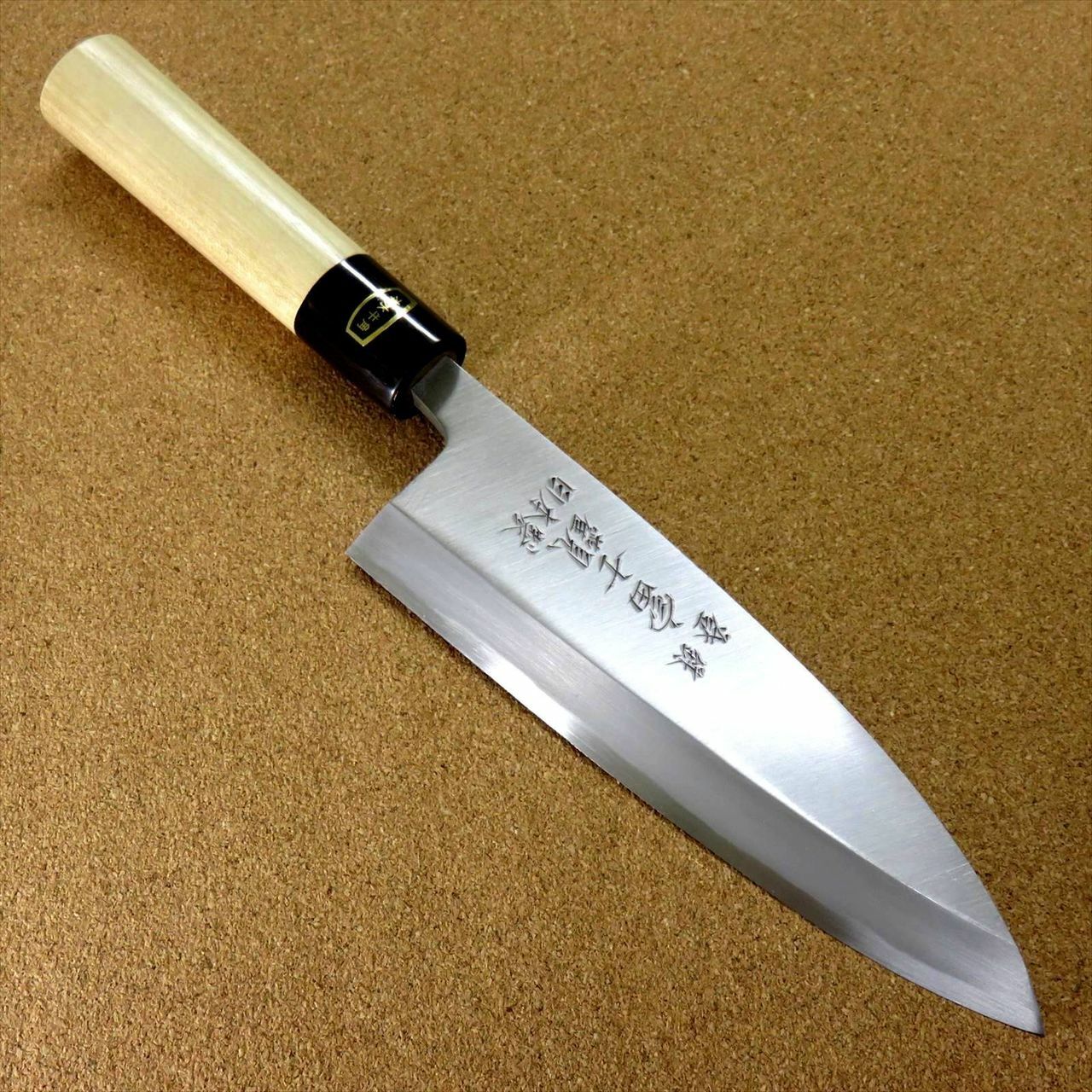
If translated literally, you get a thick knife. In other words, we are talking about a cleaver. It differs from other devices in its massiveness, which accompanies a heavyweight and a wide blade. In appearance, this blade resembles a triangle. Its base width can reach 45 to 65 mm. The length of the blade itself is capable of reaching 200 mm.
Typically, this type of knife is used when cooking fish or any meat. This blade is one of the most popular in any kitchen. It is versatile, practical, and effortless to use. Therefore, there are a lot of varieties of such a knife.
Santoku Knife
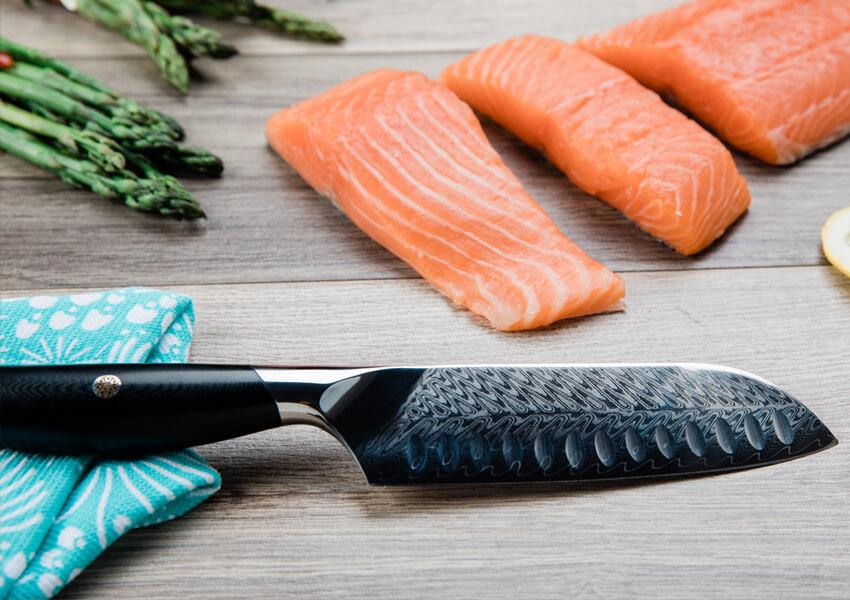
The literal translation looks rather strange, but at the same time, original. It sounds roughly like “three good things.” This name testifies to how versatile and practical this knife is. The number three speaks of its versatility because it is designed to cut, chop, grind.
Most of all, it will be preferable to use it for fish, boneless meat, and vegetables. This knife received an alternative name, sounding like “Japanese Chef.”
The blade is unique in that it is wide enough and has a straight cutting edge. The shape of the knife is very much like an ax. And in that, the butt line is rounded at the bottom. Therefore, the convenience of feeling is one of the main advantages.
As a rule, manufacturers make unique indentations on the blade, which give effect and originality and reduce the adhesion of products.
Although the knife looks quite massive and broad, its handle remains narrow and perfectly fits the hand. The difference between the width of the blade and the handle provides the convenience created by the space.
Sashimi Knife
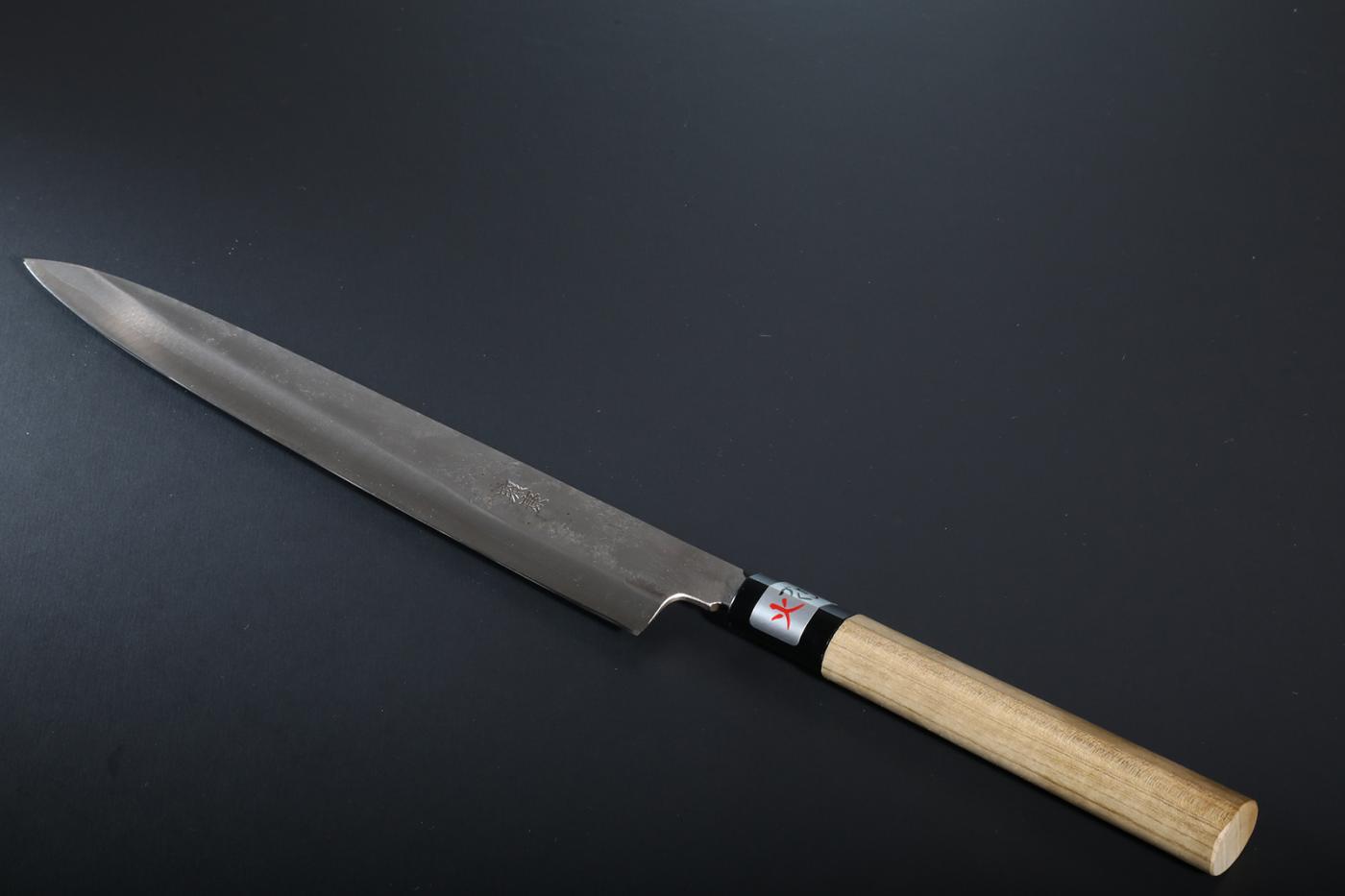
This type of blade is explicitly designed to prepare a special national Japanese dish, which is fish and meat.
The fillet is cut into thin pieces so that it is convenient to use with chopsticks. This tool is distinguished by a long and narrow blade that bears little resemblance to a sword. The knife can be up to 320 mm long and 32 mm wide. The device is one of the sharpest, which allows you to make a real masterpiece out of the dish.
Vegetable Knife
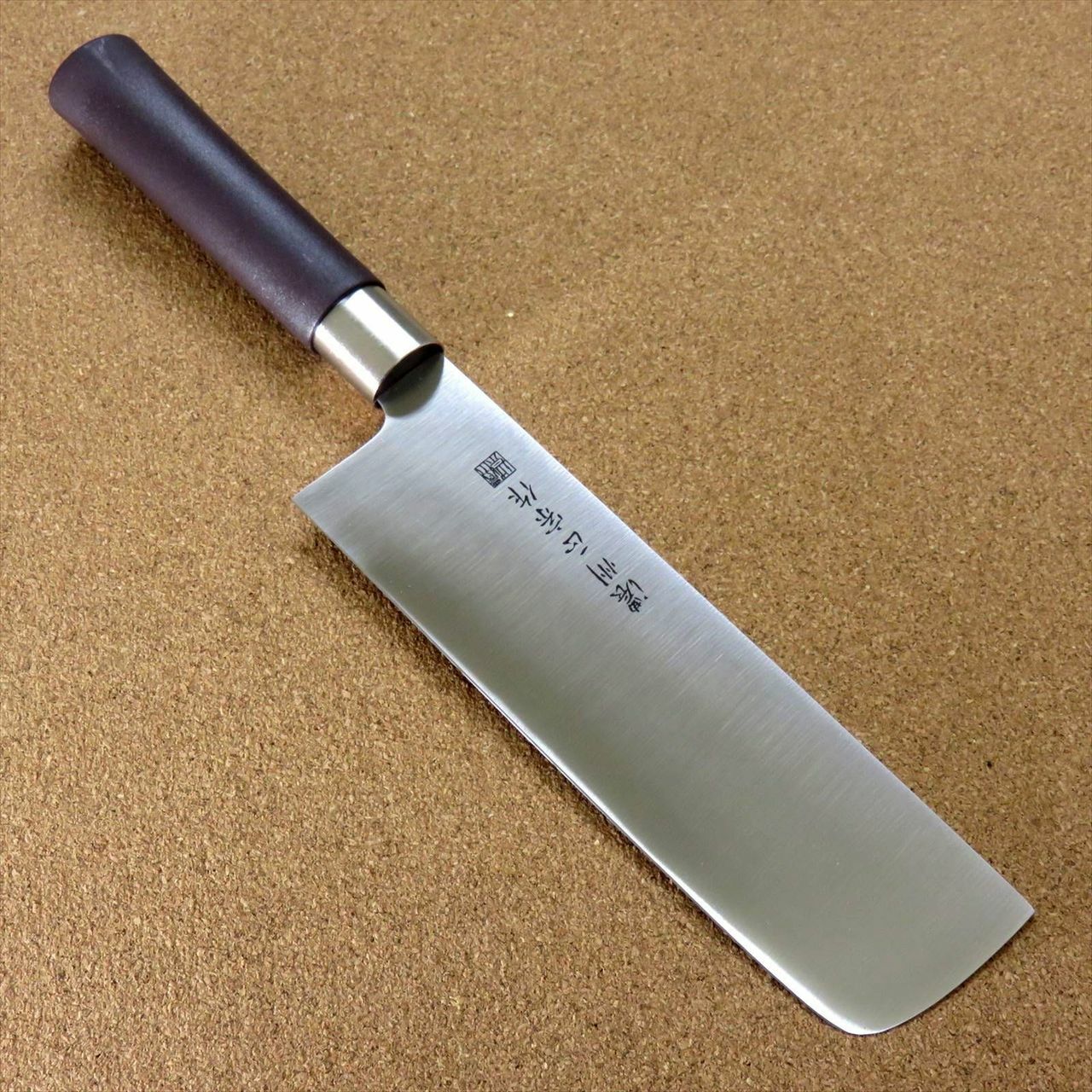
Such forged Japanese knives have the most unusual shape and seem very impressive. Their shape is most reminiscent of a trapezoid or rectangle. The width of the blade reaches 60 mm, and its length is about 180 mm.
This product is one of the sharpest, but its blade is not intended for butchering fish or meat. This tool is designed for shredding vegetables and herbs.
One of the main varieties of such knives is Usuba and Nakiri, which are practically indistinguishable in appearance. But the professionals know that the Nakiri is sharpened on both sides, which allows the slices of vegetables to be perfectly flat. Usuba is distinguished by its massiveness and is sharpened only on one side. This knife is usually used in a professional kitchen, as the slices of such a knife are skinny.
Features of the Design of Knives from Japan
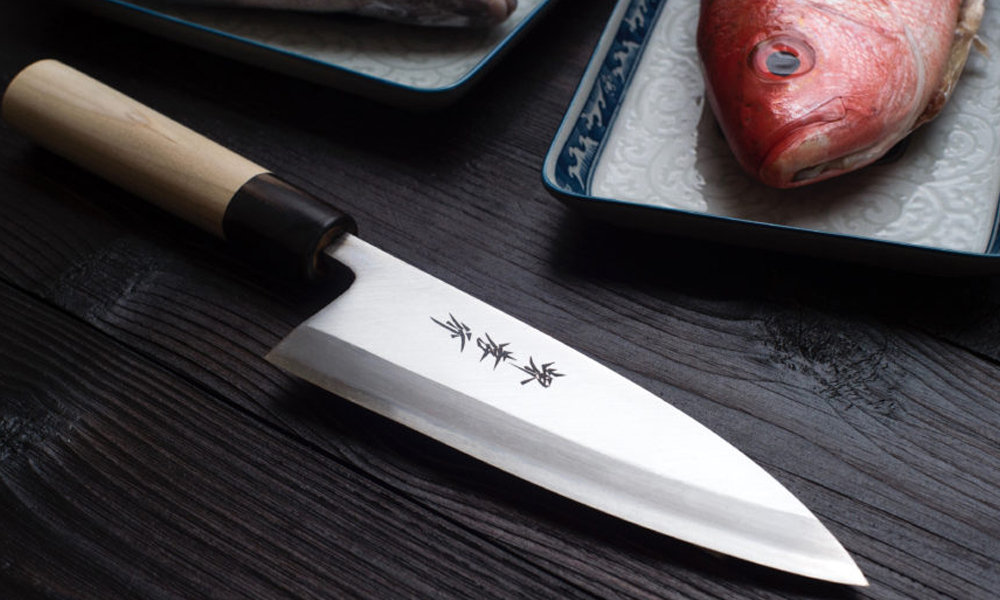
Like all other knives, Japanese models have a handle and a blade. The design of Japanese types is that they can have both double-sided and one-sided sharpening. One-sided sharpening is made especially for professional chefs for the left or right hand.
The material of manufacture is high-carbon steel, which has a soft metal lining. Otherwise, this process is called lamination. This technique contributes to the fact that the object becomes more durable and, therefore, reliable.
A professional is very careful about his tool and sharpens at least once a day. No self-respecting chef can cook any dish with a dull knife.
As a rule, sharpening is carried out using a particular water stone. This stone provides a softer sharpening and eliminates the risk of damage to the knife. The best option for good processing is natural stone. But you should know that when processing the blade, you need to do it correctly. Otherwise, you can ruin your tool, no matter how good and expensive it is.
Rating of the Best Japanese Kitchen Knives
Today, there are many different manufacturers in the world, but can all of them be called professionals? Some companies have been doing their business for quite a long time, and over the years, the quality of their work only gets better.
Japanese Kitchen Knives “Matsuri” from Damascus Steel
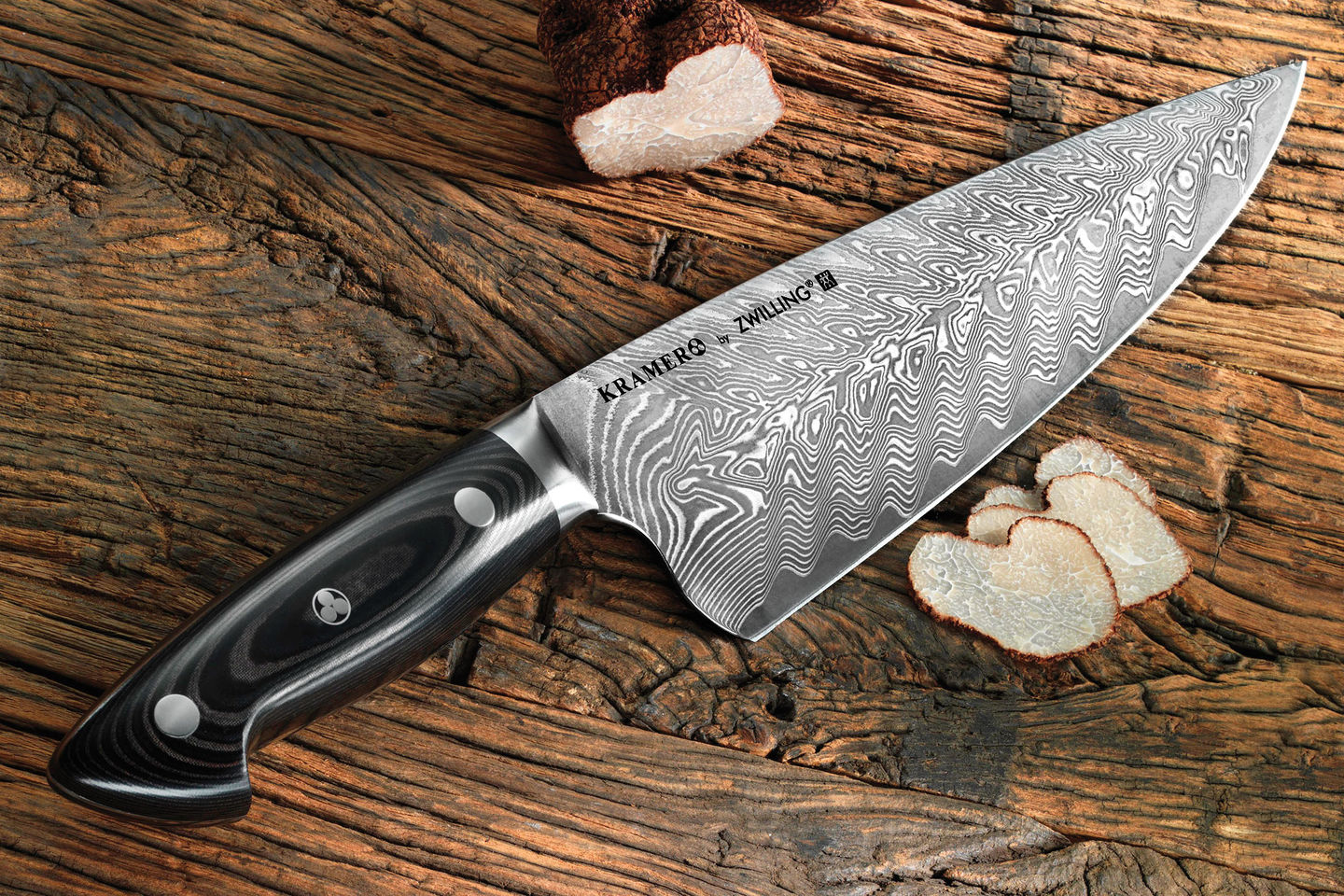
Blades of the “Matsuri” company are distinguished by the sharpness of the blade, which is made of special Damascus steel. They are distinguished by their durability and can serve you for a long time.
The cutting properties of this product can be called extraordinary. A blade with such a blade and handle will become an indispensable tool in the kitchen. The company takes care of its customers, making its products ergonomic, comfortable, and beautiful.
Their special grace and elegance distinguish matsuri knives. Having seen this product at least once, it is already impossible to take your eyes off it, and you want to test it in practice as soon as possible.
Choosing a knife from this company, you cannot regret your decision in the future. The design of this device allows you to do without sharpening for a sufficiently long amount of time.
This company has never paid attention to competition because they have no equality. Each knife is made with special love and skill.
“Kasumi” Knives
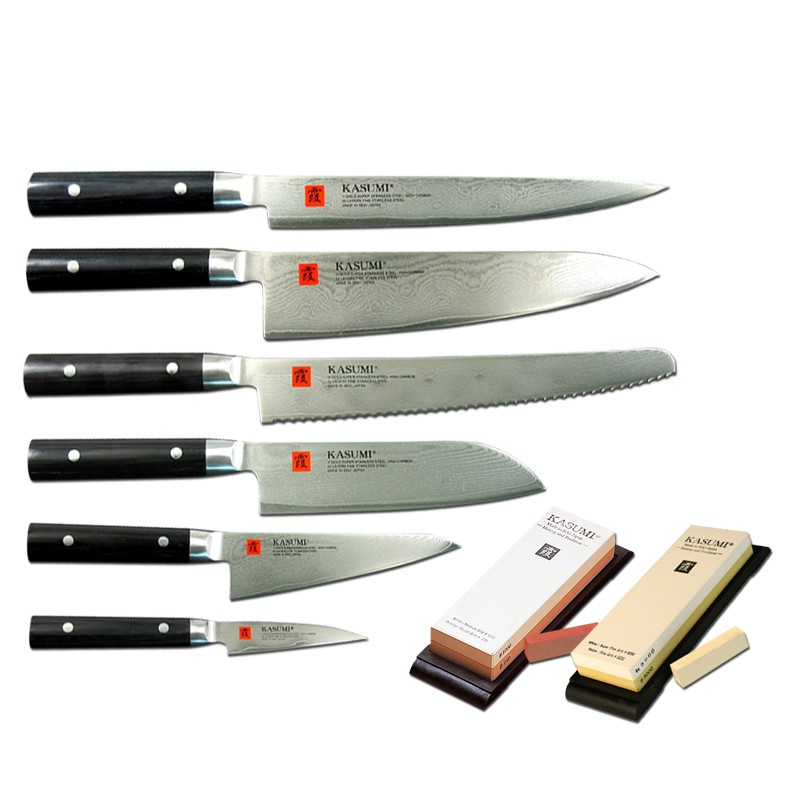
The knives of this company are truly unique, as they have their finish, which is very difficult to confuse with any other. Their products have a chic print that emphasizes the effectiveness and aesthetics of the kitchen appliance. The hallmarks of their Japanese knives will not leave anyone indifferent.
The notches made on the blade have a particular purpose so that food does not stick to the blade. The knife is laminated in three layers for extra strength to increase the service life significantly.
This product is made of Damascus steel, which is one of the finest materials available.
Japanese Knives “Tojiro”
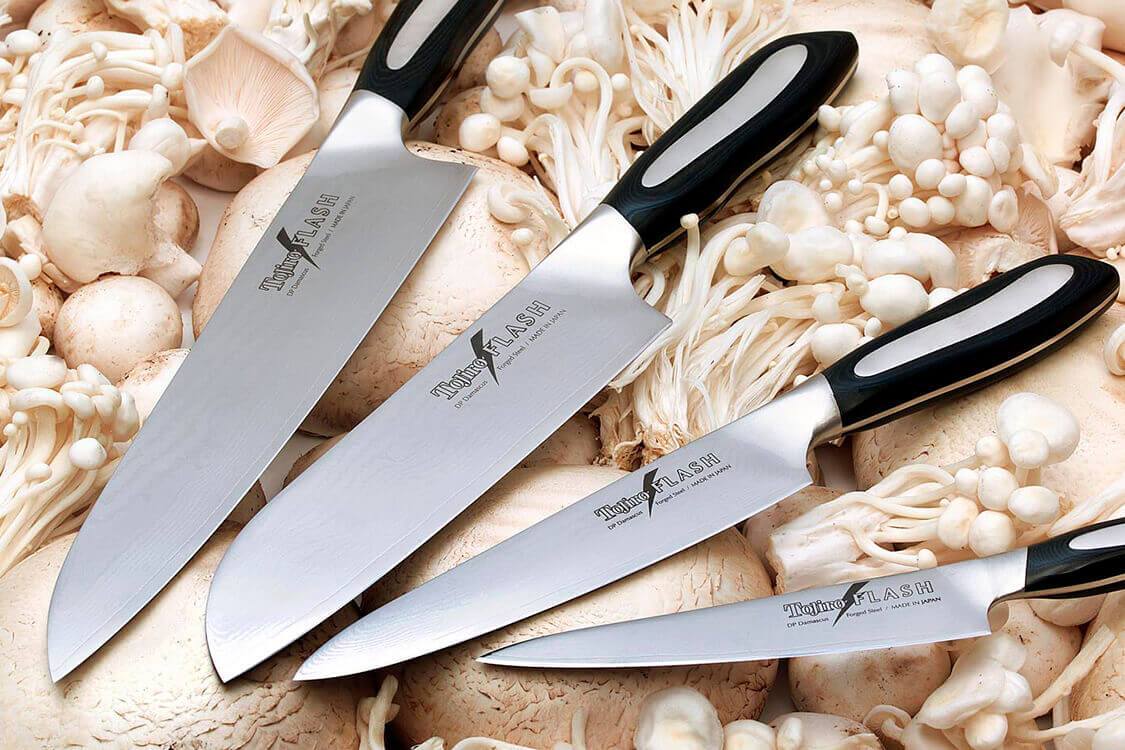
Today this company occupies one of the leading positions in the world market. The blades from this company have multi-stage processing, which, in addition to strength, also adds flexibility to the kitchen product. These knives will last you a long time and will not dull instantly.
You will be able to cook while getting absolute pleasure. This company uses the latest technology in the world of technical progress. The material they use is environmentally friendly and safe.
And the handle of the device is very comfortable and, importantly, ergonomic. It is facilitated by a special coating that prevents slipping in hand.
If you are looking for a great cooking appliance, the Japanese blades will be your best helpers. Your professional career or the path of a housewife should begin with these primary and irreplaceable tools.
How to Care for Your Japanese Kitchen Knife
If you’re in the market for a Japanese kitchen knife, there are a few things to keep in mind. First and foremost, always store your knife in a sheath when not in use. This will protect it from moisture and other elements. Secondly, be sure to keep your knife sharpened regularly. A dull knife is more likely to slip and cause accidents. Finally, make sure to wash your knife after every use, whether it’s raw or cooked food.
Conclusion
When it comes to kitchen knives, there are a lot of different types and styles out there. If you’re not sure which type of knife is best for your needs, or if you’re looking for advice on what to buy, then this guide is for you. In this article, we’ll discuss the different Japanese kitchen knife types and highlight which one might be the best fit for your needs. After reading through this guide, hopefully, you will have a better understanding of what kind of kitchen knife is right for you, and be in a better position to make an informed purchase.



